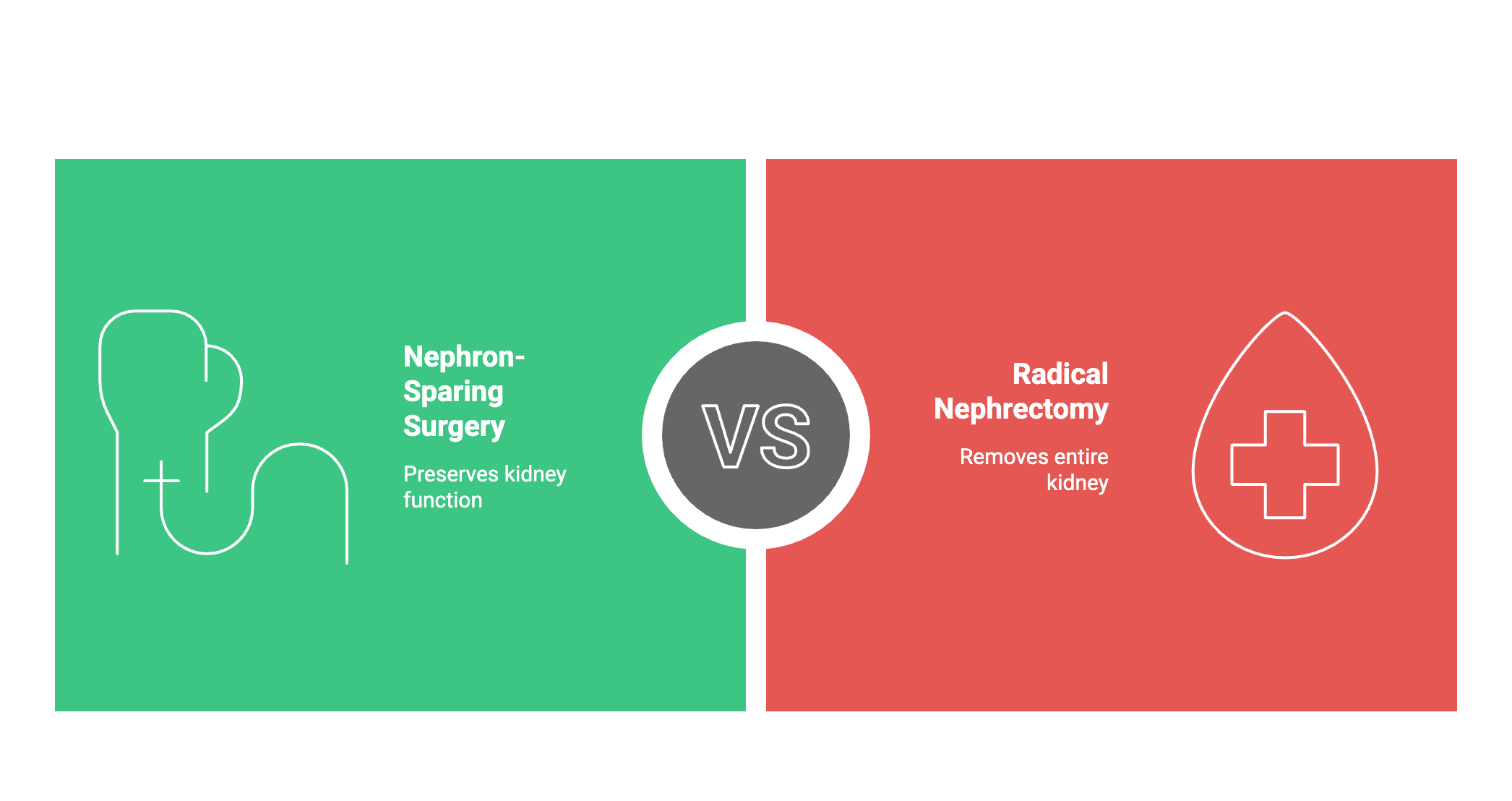
Kidney cancer is a serious condition that often requires surgical treatment. Two common procedures used to remove kidney tumors are Nephron-Sparing Surgery (NSS), also called Partial Nephrectomy, and Radical Nephrectomy (RN). While both aim to remove cancer, they differ in approach, benefits, and risks. Let’s explore these options in simple terms.
Indications: When Are These Surgeries Recommended?
- Nephron-Sparing Surgery (Partial Nephrectomy)
- Recommended for small kidney tumors (typically less than 4 cm, but can be done for tumors up to 7 cm).
- Preferred when cancer is limited to one part of the kidney.
- Ideal for patients with only one functioning kidney or those at risk of kidney failure.
- Suitable for patients with good overall kidney function.
- Radical Nephrectomy
- Recommended for larger tumors (>7 cm) or when cancer has spread extensively within the kidney.
- Necessary if the tumor is located deep inside the kidney, making partial removal difficult.
- Advised when the cancer has invaded nearby structures, such as major blood vessels or lymph nodes.
- Used when there is a high risk of cancer recurrence with partial nephrectomy.
Procedural Details: How Are These Surgeries Performed?
Nephron-Sparing Surgery (Partial Nephrectomy)
- The surgeon removes only the cancerous part of the kidney while preserving as much healthy kidney tissue as possible.
- It can be performed using open surgery, laparoscopic surgery, or robotic-assisted techniques.
- A temporary clamp may be placed on kidney blood vessels to minimize bleeding during the procedure.
- The remaining kidney tissue is then sealed and repaired.
Radical Nephrectomy
- The entire kidney, along with surrounding fatty tissue and sometimes nearby lymph nodes, is removed.
- It can also be done through open, laparoscopic, or robotic-assisted techniques.
- In cases where cancer has spread to major veins, a more complex surgery may be required.
Outcomes: Comparing the Benefits and Risks
Inspite of Kidney parenchymal preservation the outcomes of NSS are similar to as RN in terms of Recurrence of disease and Overall survival
Conclusion: Which Surgery Is Best for You?
The choice between Nephron-Sparing Surgery and Radical Nephrectomy depends on tumor size, location, overall kidney function, and cancer stage. Partial nephrectomy is the preferred option when feasible, as it preserves kidney function and has similar long-term survival rates for small tumors. However, when the tumor is too large or has spread beyond the kidney, radical nephrectomy is the better choice. A urologist or kidney cancer specialist can guide you in making the best decision based on your individual case.
Disclaimer
This article is for informational purposes only and should not be considered medical advice. If you or a loved one has been diagnosed with kidney cancer, consult a qualified healthcare professional to discuss the most suitable treatment options.




